Super User
Tough and Tear Resistant: Cortec® VCI Reinforced Paper for Puncture Prone Metals Packaging
One challenge that metal manufacturers and finishers face is corrosion protection during shipping and storage. Many strategies exist, from coatings and liquid rust preventatives to VCI packaging. The latter has revolutionized the way metals are protected in an enclosed package, replacing greasy rust preventatives with dry corrosion protection. Yet manufacturers with sharp or pointed metal parts have the additional risk of puncture, which could ruin the integrity of the entire package. Cortec® addresses this problem with CorShield® VpCI®-146 Reinforced Paper for heavy-duty puncture prone packaging applications.
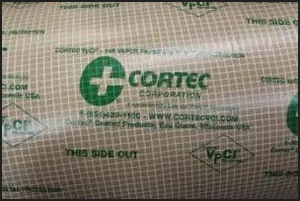 Vapor phase Corrosion Inhibitor Protection – How It Works
Vapor phase Corrosion Inhibitor Protection – How It Works
All Cortec® VpCI® brand papers are coated in-house with Cortec’s proprietary VpCI® formula. Vapor phase Corrosion Inhibitors in the coating vaporize and form a protective corrosion inhibiting molecular barrier on metal surfaces wrapped inside the paper. When the component is unpacked, the invisible protective layer does not require cleaning and the part can be used immediately.
VCI Paper - Reinforced
While standard Cortec® CorShield® VpCI®-146 Paper is enough to satisfy the corrosion protection needs of many metals being stored in one place or shipped to another, some circumstances require a tougher grade of packaging. CorShield® VpCI®-146 Reinforced Paper provides two extra benefits for these heavy-duty applications:
(1) CorShield® VpCI®-146 Reinforced Paper offers excellent tear resistance. This is important when packaging oddly shaped metals or those with pointed or sharp edges where puncture could be a concern when handling non-reinforced papers.
(2) CorShield® VpCI®-146 Reinforced Paper also includes a moisture barrier. This not only adds to the durability of the paper but also protects against the ingress of water vapor for moisture sensitive items. This quality is helpful for protecting packages that undergo harsh, high humidity environments. It is also beneficial for packaging parts still covered with grease or process oils that that might leach through or break down standard paper.
How and Where to Use CorShield® VpCI®-146 Reinforced Paper
The traits mentioned above—corrosion protection, tear resistance, and moisture resistance—make CorShield® VpCI®-146 Reinforced Paper easily adaptable to a variety of packaging needs. The standard application method is to wrap a metal item in the paper, fold edges together, and tape the paper folds in place. In addition to single item packaging, CorShield® VpCI®-146 Reinforced Paper can be used for interleaving between layers of metal components, closing the end of shipping tubes, inserting into recessed areas of large packages, and lining crates and boxes where moisture might leach through. Possible items to protect include
• Coils, wire reels, plate, bar, etc.
• Raw and machined forgings and castings
• Sheet metal work, stampings, springs, bearings, fasteners, tubing, pipes, nails, etc.
• Finished goods: engines, machinery, tools, hardware, appliances, instruments, motors, etc.
• Electrical and electronic components, controls, etc.
Whether you find yourself wrapping pipes and rods or metal coils, CorShield® VpCI®-146 Reinforced Paper is a great option for durable corrosion inhibiting moisture barrier packaging protection that resists tearing. Next time you have a puncture prone VCI packaging application, be sure to ask Cortec® about CorShield® VpCI®-146 Reinforced Paper: https://www.cortecpackaging.com/contact-us/
Buckman announces global price increase
Buckman, a privately-held, global company specializing in innovative chemistry and smart solutions, announced global price increases for all product offerings. The price increases will become effective April 1, 2022, or as customer contracts allow.
 Price increases will vary depending on geographic region, solutions offered and market(s) served. In some areas, increases may be higher where local conditions may necessitate additional adjustments.
Price increases will vary depending on geographic region, solutions offered and market(s) served. In some areas, increases may be higher where local conditions may necessitate additional adjustments.
These unprecedented increases are required due to additional market increases for raw materials, energy, packaging, fuel and logistics costs. Current cost pressure is unlike anything that has been seen in the history of the specialty chemical sector. Proper price management will ensure continued supply of Buckman products to its existing customer base.
Buckman continues to drive operational excellence throughout the organization with the goal of minimizing the impact of supply chain disruptions and cost increases.
About Buckman
Buckman is completely committed to helping our customers succeed, regardless of the challenges facing them, the industry they operate in or their location in the world. To fulfill that commitment, we surround our rigorously-trained industry experts with the highest-quality chemicals, the latest smart technology, and advanced data analysis. All focused on helping our customers’ operations improve productivity, increase profitability, and ensure safety, compliance, and sustainability. That is more than chemistry. That is Chemistry, connected.
Brenntag expands distribution agreement with Elementis in Asia Pacific
Brenntag (ISIN DE000A1DAHH0), the global market leader in chemicals and ingredients distribution, has expanded its distribution agreement with Elementis Specialties to distribute their specialty chemicals and additives for the coatings, adhesive and sealant industries in India, Nepal, Sri Lanka and the Philippines.
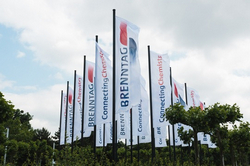 Brenntag expands distribution agreement with Elementis in Asia Pacific Image: Brenntag Sanjay Karkhanis, President Materials Science, Brenntag Asia Pacific says: “We are excited to strengthen our strategic partnership with Elementis in these four countries as its products fit well into our existing product portfolios and will enable us to develop more value-adding solutions in coatings systems for our customers in each local market. This continues to build our longstanding partnership with Elementis, with whom we have been working with for more than 15 years in Asia Pacific.”
Brenntag expands distribution agreement with Elementis in Asia Pacific Image: Brenntag Sanjay Karkhanis, President Materials Science, Brenntag Asia Pacific says: “We are excited to strengthen our strategic partnership with Elementis in these four countries as its products fit well into our existing product portfolios and will enable us to develop more value-adding solutions in coatings systems for our customers in each local market. This continues to build our longstanding partnership with Elementis, with whom we have been working with for more than 15 years in Asia Pacific.”
“Brenntag is our partner in many regions, and we look forward to expanding this relationship to the important markets in India, Nepal, Sri Lanka and the Philippines for all our end-users,” Valerio Cittadini – Director Coatings EMEIA, Elementis Specialties explained. “We are particularly excited about the experienced leadership, strong sales team, technical capabilities, and broad geographical footprint that makes up the Brenntag value proposition.”
This distribution agreement between Brenntag and Elementis will be effective starting April 1, 2022.
About Brenntag:
Brenntag is the global market leader in chemicals and ingredients distribution. The company holds a central role in connecting customers and suppliers of the chemical industry. Headquartered in Essen, Germany, Brenntag has more than 17,000 employees worldwide and operates a network of about 700 sites in 78 countries. In 2021, Brenntag generated sales of around 14.4 billion EUR. The two global divisions, Brenntag Essentials and Brenntag Specialties, provide a full-line portfolio of industrial and specialty chemicals and ingredients as well as tailor-made application, marketing and supply chain solutions, technical and formulation support, comprehensive regulatory know-how, and digital solutions for a wide range of industries. In the field of sustainability, Brenntag pursues specific goals and is committed to sustainable solutions in its own sector and the industries served. Brenntag shares have been listed at the Frankfurt Stock Exchange since 2010, initially in the MDAX and since September 2021 in the DAX. In addition, the Brenntag SE shares are listed in the DAX 50 ESG and DAX ESG Target. For more information, visit www.brenntag.com
GOOD NEWS - Paper grocery and take-away food bags can be collected for recycling
Under a new campaign name, “Recycling in the Bag”, Fibre Circle, the producer responsibility organisation for the paper sector, teamed up with food service and packaging producer Detpak and Remade Recycling (part of the Mpact Group) to show 200 recycling collectors that paper grocery bags and brown take-away food bags can be collected from households and sold with their wastepaper collections.
The circular waste economy is a thriving network of collectors, buyers and processors, using recyclables such as wastepaper to make new products. Every year, more than 1.1 million tonnes of paper and paper packaging are recovered in South Africa and recycled into new products that we use every day. These products can then be recycled again, in many cases up to 25 times.
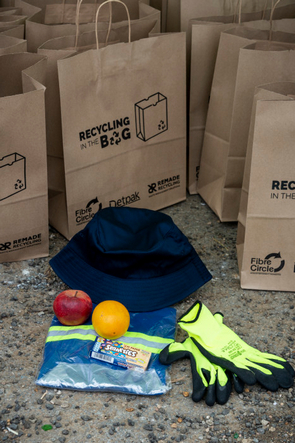 Each collector then received a pie and soft drink, along with a paper goodie bag, naturally in the same material that makes grocery bags, containing a reflective T-shirt, sun hat, safety gloves, fresh fruit and a box of Smarties, also in a recyclable paper box. Paper recycling is largely based on different grades of paper. In industry speak cardboard boxes are termed K4 while used white office paper is termed as HL1 (heavy letter 1). Cereal boxes, egg cartons and other similar paper items are deemed common mixed waste (CMW).
Each collector then received a pie and soft drink, along with a paper goodie bag, naturally in the same material that makes grocery bags, containing a reflective T-shirt, sun hat, safety gloves, fresh fruit and a box of Smarties, also in a recyclable paper box. Paper recycling is largely based on different grades of paper. In industry speak cardboard boxes are termed K4 while used white office paper is termed as HL1 (heavy letter 1). Cereal boxes, egg cartons and other similar paper items are deemed common mixed waste (CMW).
Thankfully, citizens only need to know whether something is recyclable or not. Once packaging or a recyclable product leaves our home with a waste collector or recycling company, they tend not to think about where it goes.
For a waste collector who sells our recyclables to a buy-back centre or recycling branch, the type of paper – and the value they get for it – is significant.
It is important for the respective grades to be separated and baled together as they form the ingredients for the paper products they will be recycled into.
Samantha Choles, Fibre Circle communications manager, explains, “Old cardboard boxes and paper bags will be repulped into other paper types – these will become new cardboard boxes and paper bags, and so the cycle continues.”
Used white paper is recycled into tissue products such as toilet paper while several paper grades are recycled into common household packaging such as matchboxes, tooth paste boxes and cereal boxes.
“With paper bags now synonymous with suburban and city-based grocery deliveries after Covid kept many of us away from supermarkets, Detpak and its customers felt that it was important to close the loop with the production and recycling of paper bags,” explains Carla Breytenbach, marketing manager for Detpak.
At Remade Recycling’s Midrand branch, small groups of collectors were invited to a discussion and demonstration by Anele Sololo, manager for education and SMME development at Fibre Circle.
Each collector then received a pie and soft drink, along with a paper goodie bag, naturally in the same material that makes grocery bags, containing a reflective T-shirt, sun hat, safety gloves, fresh fruit and a box of Smarties, also in a recyclable paper box.
“Safety and visibility is a key aspect in the lives of collectors who navigate the busy streets of our suburbs daily making an honest living,” notes Donna-Mari Noble, communications manager for the Mpact Group’s Recycling business, which includes Remade Recycling.
With Global Recycling Day coming up on Friday 18 March, what better way to contribute to the circular economy than by adding your paper bags to your recycling?” If you are not recycling yet, start simple by putting out recyclables such as cardboard boxes, pizza boxes, grocery bags and other similar packaging on your pavement for recycling collectors.
For more information on what is recyclable, visit https://fibrecircle.co.za/promotional-material/
ABOUT FIBRE CIRCLE
As a government recognised producer responsibility organisation, Fibre Circle manages extended producer responsibility programmes to keep paper and paper packaging – a renewable and recyclable product - out of South Africa’s landfills. It currently has 180 registered producers including paper manufacturers, importers, brand owners and retailers.
ABB to automate bioplastics plant to help meet the growing global demand for sustainable materials
ABB has been awarded a major contract by NatureWorks, the world’s leading manufacturer of polylactic acid (PLA), a low-carbon bioplastic made from renewable agricultural resources, to automate their new, greenfield plant in Thailand, converting sugar cane to the polylactic acid (PLA) biopolymer, IngeoTM.
- ABB technology to automate NatureWorks’ new bioplastics plant in Thailand helping to meet the increasing global market demand for sustainable materials
- The new site is set to produce 75,000 tons of Ingeo™ PLA biopolymer per year – integrated process from fermentation to polymerization enhances supply chain reliability
- ABB technology will help improve energy and production efficiency of bioplastic manufacturing, expected to grow over 260 percent by 2026
The new plant in Thailand, will ferment and distill plant-based sugars – in a process similar to making beer or wine – converting the sugars first to lactic acid, then lactide and then polymerize them into Ingeo. In the new site, these three separate production processes will be fully integrated, resulting in significant improvements in energy and production efficiency. In addition, the integration of the fermentation phase will secure the supply of lactic acid. The Thailand facility will use sugarcane as feedstock and is set to produce 75,000 tons of sustainable plastic per year when fully operational. The anticipated projected startup for this greenfield facility is in the second half of 2024.
ABB’s scope of work is a two-part order including a FEED (front end engineering design) study followed by detailed automation project execution, with ABB acting as the Main Automation Contractor. ABB will deliver the hardware, software, control room design solutions, engineering, and site support to fully develop NatureWorks’ greenfield system. ABB’s market leading distributed control system AbilityTM System 800xA will maximize plant efficiency and reliability through automation. Leveraging this technology, ABB will integrate inputs from all key systems into one single user-friendly overview. As a result, operators will be able to utilize data insights from all areas of the plant, delivered in real time, to drive efficiency, reduce risk and ensure production optimization.
The project will apply State Based Controls (SBC), enabling operators to take fewer interactions to start up a unit and reduce risk by having access to the right information at the right time. In addition, ABB’s automated engineering batch application tool will be implemented for this project.
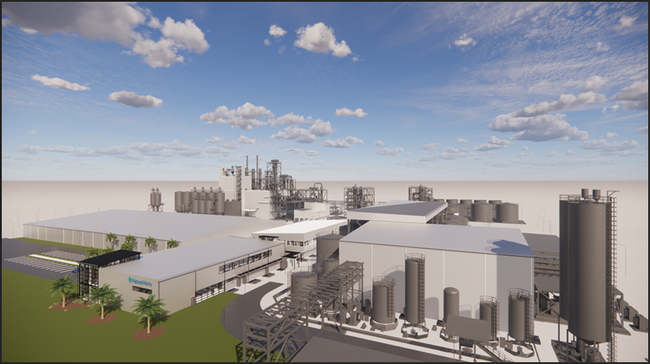
“ABB’s global presence, especially in the US and Thailand, combined with their deep expertise in the chemical industry, leading automation solutions, and design optimization approach, makes them the obvious choice for a partner to help achieve meaningful progress in our new plant,” said Steven Bray, Vice President of Operations and Project Program Manager at NatureWorks. “We also share a joint vision when it comes to resource efficiency, circular economy and sustainability.”
Part of NatureWorks’ global expansion plan, the plant will help meet the growing global demand for sustainable materials. Bioplastics today represent less than 1 percent of all plastic produced globally but production is expected to grow over 260 percent between 2020 and 2026[1].
Ingeo, an innovative material with unique properties that all begin with greenhouse gases, is an eco-friendly, biobased material used in a wide-range of plastic and fiber products from compostable food packaging - coffee capsules, tea bags, food containers – to 3D printing filament, diapers, and even refrigerator liners. Compared to traditional fossil-based polymers, manufacturing Ingeo produces approximately 80 percent less greenhouse gases and uses 52 percent less non-renewable energy.
“We are proud to support NatureWorks in addressing the increasing demand for sustainable high-performance materials and helping maximize both energy and production efficiency in the new facility,” said Brandon Spencer, President, ABB Energy Industries. “Our project with NatureWorks is perfectly aligned with our 2030 Sustainability Strategy and driving more sustainable use of our planet’s resources through innovative solutions that help reshape industries and enable a low-carbon society.”
ABB (ABBN: SIX Swiss Ex) is a leading global technology company that energizes the transformation of society and industry to achieve a more productive, sustainable future. By connecting software to its electrification, robotics, automation and motion portfolio, ABB pushes the boundaries of technology to drive performance to new levels. With a history of excellence stretching back more than 130 years, ABB’s success is driven by about 105,000 talented employees in over 100 countries. www.abb.com
ABB’s Process Automation business is a leader in automation, electrification and digitalization for the process and hybrid industries. We serve our customers with a broad portfolio of products, systems, and end-to-end solutions, including our # 1 distributed control system, software, and lifecycle services, industry-specific products as well as measurement and analytics, marine and turbocharging offerings. As the global #2 in the market, we build on our deep domain expertise, diverse team and global footprint, and are dedicated to helping our customers increase competitiveness, improve their return on investment and run safe, smart, and sustainable operations. www.go.abb/processautomation
Valmet to retrofit the automation system at EDP’s hydropower plant in Portugal
Valmet will replace an aging third-party automation system to operate EDP’s Vilarinho das Furnas pumped-storage hydropower plant in Vilarinho das Furnas, Portugal.
The order is included in Valmet's orders received of the first quarter 2022. The value of the order will not be disclosed. The complete system will be handed over to the customer in September 2023.
Pumped-storage hydroelectricity method stores energy as gravitational potential energy of water, pumped from a lower to a higher elevation reservoir. It allows energy from different sources to be saved for periods of higher demand. During periods of high electrical demand, the stored water is released through turbines to produce electric power.
“We are very proud to start collaborating with EDP, a key player in the Portuguese energy market. We hope that this first project is the beginning of a long-lasting and fruitful relationship. Valmet’s state-of-the-art hydro plant automation gives customers more accurate control, resulting in more stable and safer operation. Intelligent hydro plant automation can strongly contribute to cleaner and more efficient electricity production, which is in line with EDP’s strong environmental commitment,” says Amadeu Santos, Country Manager, Automation business line, Valmet.
 Valmet will replace an aging third-party automation system to operate EDP’s hydropower plant in the Homem river in Vilarinho das Furnas, Portugal.
Valmet will replace an aging third-party automation system to operate EDP’s hydropower plant in the Homem river in Vilarinho das Furnas, Portugal.
Technical information about the delivery
Valmet’s delivery scope consists of a new Valmet DNA automation solution for distributed process control and monitoring, turbine governor, excitation system, synchronization and electrical protection for generator and step up transformers. These will be installed in EDP’s Vilarinho das Furnas hydropower plant.
About the customer EDP and the Vilarinho das Furnas hydropower plant
The Portuguese EDP Group is a multinational, vertically integrated utility company providing electricity and gas to more than 9 million customers. Its Vilarinho das Furnas hydropower plant started operating between 1972 and 1987. The total annual energy production output of the company is approximately 194 GWh.
For further information, please contact:
Amadeu Santos, Country Manager, Portugal, Automation, Valmet, tel. +351 9 61 72 48 50
Read more: Valmet's total concept for hydropower plants
Valmet is the leading global developer and supplier of process technologies, automation and services for the pulp, paper and energy industries. We aim to become the global champion in serving our customers.
Valmet's strong technology offering includes pulp mills, tissue, board and paper production lines, as well as power plants for bioenergy production. Our advanced services and automation solutions improve the reliability and performance of our customers' processes and enhance the effective utilization of raw materials and energy.
Valmet's net sales in 2021 were approximately EUR 3.9 billion. Our more than 14,000 professionals around the world work close to our customers and are committed to moving our customers' performance forward - every day. Valmet's head office is in Espoo, Finland and its shares are listed on the Nasdaq Helsinki.
Read more www.valmet.com
Kemira increases prices for all product lines in EMEA with immediate effect
Kemira, a global chemicals company, announces price increases for all product lines for all industries in the EMEA region.
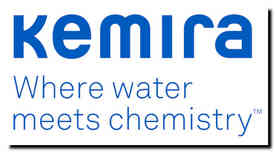 Costs for all main raw materials, energy and freight have massively increased during recent months and continue to rise. The surge in costs has been further intensified by the ongoing war in Ukraine.
Costs for all main raw materials, energy and freight have massively increased during recent months and continue to rise. The surge in costs has been further intensified by the ongoing war in Ukraine.
Significant price increases are necessary for all product lines for all industries in EMEA and will be effective immediately or as contract terms allow. They apply in addition to previous price increases made.
Price increases will vary by product line and geographic region. Details of the required price increases will be communicated to customers via Kemira sales organization.
Kemira continues to be committed as your long-standing supplier of high-quality products and sustainable solutions for the water intensive industries globally.
Kemira is a global leader in sustainable chemical solutions for water intensive industries. We provide best suited products and expertise to improve our customers’ product quality, process and resource efficiency. Our focus is on pulp & paper, water treatment and energy industry. In 2021, Kemira had annual revenue of around EUR 2.7 billion and around 5,000 employees. Kemira shares are listed on the Nasdaq Helsinki Ltd.
www.kemira.com
IDEC 7” HMI Uses Smartphone-Type Glass Touch Panel
Advanced technology touchscreen displays in a popular-sized form factor make this HMI a leading choice for many applications across a wide variety of industries.
IDEC Corporation has expanded its HMI product family with the new HG2J Series 7” touchscreen HMI. Hardware and software advancements incorporated into this HMI make it easier to integrate and use for any type of industrial application.
Advanced and durable touch display
The HMI’s projected capacitive touch panel (PCAP) technology saves space, improves performance, is wear-resistant, and provides a long life. PCAP glass requires fewer layers than traditional analog resistive plastic films, and the self-capacitance technology can also prevent accidental input due to water droplets. It is also more resistant to scratches, won’t turn yellow in the sun, and has a higher tolerance for dirt deposits, and for contact with cleaning or washdown chemicals. Fewer layers and better light transmission ratings mean less backlight power is needed and provides an industry-leading 500 cd/m2 brightness level and 50,000-hour backlight life.
With a TFT LCD display resolution of 800x480 pixels, the HG2J HMI is conveniently sized for applications both small and large, and it provides smooth font rendering within its large high-visibility display area. This PCAP display does not require the large bezels of standard IR displays, allowing the bezel to be slimmer and sleeker in appearance for a small installation footprint, and the overall HMI depth is just 30mm, substantially less than the 40mm or more depth required by competing products.
Operation with an input voltage of 12-24 VDC makes the HG2J HMI suitable for a wide variety of industrial, solar, and vehicle applications. The HMI is rated for operation in an exceptionally wide temperature range of -20 to +60°C, and it carries IP66/67, UL, and CE ratings, with a Class I Div 2 hazardous location rating.
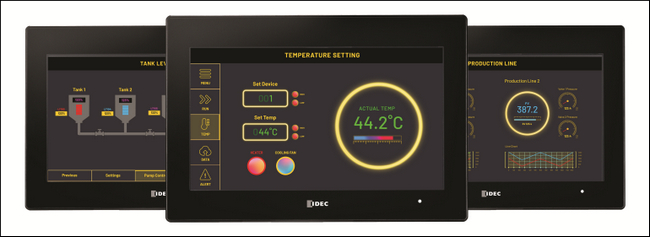
Adaptable connectivity
HG2J HMIs feature a full complement of connectivity options, including two USB A ports, serial connectivity (RS485/422 and RS232C), and an Ethernet port. Push-in wiring connectors are used for power and serial connections, providing easy installation and service. The USB ports enable connectivity with Linux-compatible accessories such as Wi-Fi and Bluetooth dongles, speakers, and barcode readers.
A single reset button is used for rebooting the unit, and a multifunction front LED light provides status information for the hardware, boot mode, and OS operating mode. Maintenance is simplified because the HMI requires no batteries, it uses MRAM to maintain data stored in internal data registers in the absence of power, and it features a hypercapacitor to maintain clock operation for up to two weeks without line power.
Communications and IIoT
The HG2J HMI supports over 100 serial and Ethernet industrial communication protocols, including Modbus, providing connectivity with most PLC makes and models and making it ideal for industrial internet of things (IIoT) applications. The HMI supports simultaneous use of up to four protocols, and the User Communication Protocol function allows users to develop their own protocols for specialty serial or Ethernet devices. A built-in web server provides remote access functionality for PCs and mobile devices just as if the user were in front of the HMI itself—improving operation, troubleshooting, and maintenance—while the FTP client/server protocol can be used for transferring configurations and data between local memory and external systems. Email functionality provides up to 255 templates so alarm logs, data values, screenshots, and more can be transmitted to multiple recipients securely using SMTPS and SSL. The HMI also supports Twitter for notifying users of system status.
Flexible software
The HG2J HMI OS provides 24Mb of user application memory and more address space than prior models. Download time is nine times faster than prior models, and it supports a wide variety of external devices and printers.
All HMIs in the product line are configured using the same simple, intuitive WindO/I-NV4 screen creation software, so users only need to be familiar with one inexpensive software package. The drag-and-drop user interface and built-in symbol library with over 10,700 images helps users rapidly create cutting-edge graphics. Another advantage is projects can automatically be converted from one HMI size to another within seconds using the same software.
High-performance and capable HMI
The IDEC HG2J 7” touchscreen HMI uses modern hardware and software technologies to provide an optimal display size and a high degree of usability in the smallest form factor possible, with ratings enabling integration into all types of projects and environments. These features make it a good fit for remote operations in the petrochemical and mining industries, and in food & beverage and life sciences applications subject to washdowns.
As with all its products, IDEC offers free tech support for the HG2J 7” HMI, with no service or support contract required. For complete specifications or additional information, please contact IDEC Corporation at 800-262-IDEC (4332), or visit us online at us.idec.com/7inchHMI .
About IDEC: IDEC Corporation is a global supplier that has provided innovative and reliable industrial automation and control products since 1945. Covering a broad range of market needs, these feature-rich and value-driven products include PLCs, human machine interfaces (HMIs), safety products and other industrial automation components. By delivering world-class products backed by personalized service and highly-rated technical support, IDEC enables design engineers to create lean, cost-effective and safe solutions to optimize their automation applications. With the recent acquisition of APEM, one of the world's leading manufacturers of operator interface panels and related components, IDEC continues to enhance our customers’ ability to create high-quality solutions. For additional information, visit www.IDEC.com/usa
Edge computing and its role in the smart factory
~ Making sense of the edge ~
According to Google Trends data, worldwide searches for ‘edge computing’ have increased tenfold in the last five years. Google alone boasts 340 million search results for the phrase — hardly simple revision for those curious about the technology. Among the noise — and the varying definitions of edge computing — the technology has become somewhat misunderstood. Martyn Williams, Managing Director of industrial software expert, COPA-DATA UK examines the role of edge computing in smart factories.
Edge computing describes a distributed version of computation that brings data analysis closer to the source of data. In a factory setting, this could see data processing take place at the machine level. Unlike centralised models, where information would be sent to a data centre or the cloud, edge computing allows data capture, analysis, and action to be performed on the edge of a process — hence the name.
Despite its capabilities, edge computing is not a replacement for centralised data storage methods, or an alternative to other data processing and management technologies. In fact, these architectures must work together to be truly beneficial.
So, are edge devices just a new brand of the same technology? Not exactly.

Latency reduction
Edge devices are unique in the sense that they provide first-stage processing of data before sending this information elsewhere. Edge devices can also act on this data within the realms of the device itself, thanks to their intelligent capabilities. This can be achieved using forms of artificial intelligence (AI) and machine learning to help in decision making.
Because everything is taking place on the device, this method can significantly reduce latency, removing the time spent between sharing this information with distant data centres and awaiting feedback.
In practice, this could help a manufacturer to avoid critical failures and downtime. In an oil and gas application, for example, an edge device could detect dangerously high pressure in pipes. Rather than waiting for this data to be processed elsewhere and sent back to a site manager, the device could trigger instant shut offs or adaptations to avoid a disaster. Similarly, this same method can be used to make automated adjustments to a process to improve the outcome — this could be related to energy efficiency, accuracy or productivity.
The ability to effect change based on real-time data does exist in current software platforms. COPA-DATA’s zenon, for instance, can be deployed across an entire facility to monitor operations. Compatible with most communication protocols, the software can pull data from a variety of equipment, sensors and vertical systems to provide operators with a real-time dashboard of facility-wide insights. Like our aforementioned example, this can alert users to disruptions in production and highlight potential problems.
Streamlining data
IIoT technologies have resulted in a huge increase in data across the industry. Today, it is not unusual for manufacturers to produce data on everything from energy efficiency and productivity, right through to operational insights and predictive maintenance. In fact, research suggests that the average smart factory produces five petabytes of data every week — that’s five million gigabytes, or the equivalent of more than 300,000 16 gigabyte iPhones.
Manufacturing’s big data has quickly become colossal, and edge computing provides a way to reduce the volume of data being sent to a centralised space.
For industries that rely on data integrity for compliance, deploying edge computing to manage some data analysis can become a vital part of a data management strategy. Pharmaceutical manufacturers, for example, must comply with the Food and Drug Administration (FDA) 21 CFR part 11 regulation. This standard applies to drug manufacturers and bio tech companies and requires these organisations to keep an accurate audit trail and electronic records. EU GMP Annex 11 is the European equivalent.
In these industries, on-edge analysis of some data can reduce the volume of information being sent to the cloud or data centre. Crucially, this ensures that time sensitive data is not lost in the flood of information.
Scaling the edge
While some processes do benefit from instant data analysis, smart factories cannot work in silos. The rise of the edge does not mark the downfall of other data management technologies. In fact, it reinforces their necessity.
Software platforms that can communicate with edge devices are essential for making edge technology scalable. Moreover, platforms that can collect, analyse, and visualise data from the edge — while compiling this with a variety of other types of equipment — are essential for constructing a holistic view of a factory’s operations.
Realistically, most manufacturing facilities are not in a position for the widespread deployment of edge devices, or edge platforms to converge these technologies. Instead, manufacturers need scalable options in their journey to digitalisation — and independent software can be the glue that makes this possible.
About COPA-DATA
COPA-DATA is an independent software manufacturer that specializes in digitalization for the manufacturing industry and energy sector. Its zenon® software platform enables users worldwide to automate, manage, monitor, integrate and optimize machines, equipment, buildings and power grids. COPA-DATA combines decades of experience in automation with the potential of digital transformation. In this way, the company supports its customers to achieve their objectives more easily, faster and more efficiently.
The family-owned business was founded by Thomas Punzenberger in 1987 in Salzburg, Austria. In 2020, with more than 300 employees worldwide, it generated revenue of EUR 54 million.
More than blowing bubbles
Selecting the right blower technology for optimum performance of a wastewater treatment system
Aeration systems are among the biggest energy consumers in a wastewater treatment facility and they can be a maintenance challenge too. To keep costs under control, plant operators have a choice of designs to upgrade to blowers that run efficiently and reliably under all expected operating conditions.
Edward Paro, Portfolio Manager Compressors & Aeration for Sulzer, looks at different blower technologies and how to improve the reliability and efficiency of legacy plants.
Modern diffused aeration systems have transformed the design of wastewater treatment facilities. Capable of operating in deep tanks, these systems allow operators to process more water in less space. They can run for multiple years with minimal maintenance and, with the right control systems, they can manage the highly variable demand experienced by many municipal and larger industrial sites.
To deliver these benefits, every system requires a reliable, efficient supply of air. The blower systems used to supply the air occupy a niche place in the spectrum of industrial and commercial air handling equipment. They operate at higher pressures than the fans used in HVAC applications, but must deliver larger volumes of air than typical industrial compressors. At the same time, in order not to risk breaching regulations and permit requirements they need to offer high levels of availability. They need to work efficiently while also being quiet and easy to control.
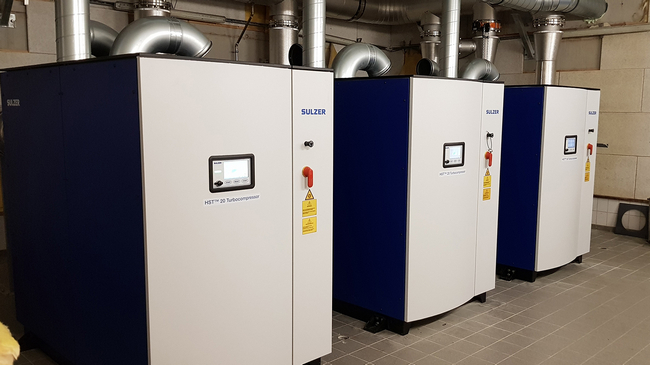 Single stage kinetic blowers with high speed motor drive and magnetic bearings, such as the HST™ turbocompressor by Sulzer shown here, have become the preferred choice for waste water treatment applications in recent years.
Single stage kinetic blowers with high speed motor drive and magnetic bearings, such as the HST™ turbocompressor by Sulzer shown here, have become the preferred choice for waste water treatment applications in recent years.
Volumetric blowers
Some blower designs operate using volumetric principles. Air is drawn into a chamber which is then reduced in size, squeezing the air to boost its pressure before releasing into the outlet pipework. Rotary lobe blowers, also known as Roots blowers, achieve this with two interlocking rotors that spin in opposite directions.
Roots blower technology was introduced in the 1800s. It remains largely unchanged to this day and is still widely used in wastewater applications, especially in Europe. These blowers are simple, reliable and require little maintenance. Their efficiency is limited by not having a reducing chamber built-in, but rather pushing the air into the discharge.
In addition, as all volumetric designs’ efficiency is held back by the need for small gaps between the parts, some air will escape back into the inlet, some of it will leak to the outside through seals and some of the already pressurized air may leak to a less pressurized part. The design also produces pulses of air, making these blowers noisy in operation and creating vibration in the discharge pipework and its components.
Another volumetric compression approach that has become popular in recent years is the rotary screw blower. This uses interlocking male and female helical rotors that rotate to decrease the available volume between them. At the start of the compression cycle, the inlet air fills the flute space and becomes trapped. The air is then continually compressed as the male and female components rotate with each revolution until the air is pushed through the discharge outlet.
Compared with traditional lobe blowers, the way air is internally compressed in rotary screw blowers reduces energy consumption by 30%. Screw blower noise levels are typically lower than conventional tri-lobe Roots blowers. The pipework noise is somewhat reduced because the output is continual rather than pulsed.
Kinetic blowers
Compression can also be achieved by changing the velocity of the air rather than its volume. Centrifugal blowers do this using a rapidly spinning impeller. Air is drawn in close to the center of the impeller, turned through 90 degrees and accelerated as it is thrown outwards by the rotating blades. Multi-stage centrifugal blowers, commonly used in U.S. wastewater treatment plants, mount several impellers on the same shaft, with air moving from one to the other, increasing its pressure as it goes.
The output of a single stage centrifugal blower depends upon the size of the impellers and their rotational speed. To avoid large, heavy and expensive impellers, this type of blower often includes a gearbox to speed up the rotation of the motor. That has downsides, however, including friction losses, a larger number of wearing parts and the need for additional maintenance and overhauls.
An alternative to mechanical gearboxes is the use of a variable frequency drive (VFD) and a high speed motor to run a small impeller at very high rotational speeds. “Turbo blower” designs, such as Sulzer’s HST™, are mechanically optimized and highly efficient, with a design that utilizes specialized bearings to cope with the elevated speeds.
The magnetic bearings used in Sulzer HST turbo blowers ensure there is no metal-to-metal contact between the shaft and the bearing. These systems eliminate mechanical wear, extending the life of the blower and their ability to support the shaft from zero speed keeps the HST efficient and wear-free through frequent on-off cycles.
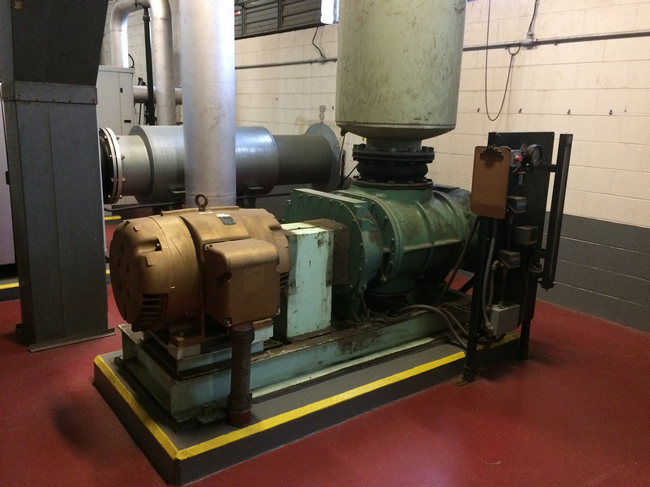 In the past rotary lobe blowers, also known as ”Roots” blowers, were a popular selection for waste water aeration.
In the past rotary lobe blowers, also known as ”Roots” blowers, were a popular selection for waste water aeration.
Turndown requirements
The air demand in a wastewater treatment process can vary significantly depending on the volume of water entering the system. Optimum performance requires the ability to adjust blower output as conditions change. Volumetric blowers can typically “turndown” to 30% of their full output; reducing the speed of the motor reduces the output of the blower and the energy consumed by the system. Multi-stage centrifugal compressors have a narrower operating range, allowing turndown to 60% or 70% of full output before efficiency begins to drop off significantly. Single-stage centrifugal blowers using adjustable vanes at the inlet and/or outlet and high speed turbo compressors using variable speed operation can reach between 30-50% turndown from maximum flow, depending on pressure.
For applications where demand varies beyond the turndown capabilities of a single compressor, operators usually install multiple units, switching them on or off in sequence, according to demand. This approach optimizes energy efficiency and improves the overall availability of the system, since spare capacity is available outside peak times should a blower be unavailable.
Reducing maintenance costs
The different types of blowers will call for different types of maintenance. The gear box of the single-stage centrifugal blower will need regular attention according to a strict service and maintenance program. The screw blower design will need to be checked regularly in order to avoid costly breakdowns and often an exchange of the core elements can be expected at some point.
The Roots type of blower is often not cared for properly and hence is prone to seizing up. If that happens, it is usually repairable but may lose significant volumetric tightness and as a result efficiency will suffer. High-speed designs with magnetic bearings do not have wearing parts and the HST turbocompressor is unique in not containing any liquid. This limits physical maintenance tasks to checking and exchanging air filters.
Introducing more efficient and more reliable blowers can have a significant benefit to the operational and maintenance budgets. For example, in one case where HST blowers were introduced, maintenance costs were reduced by 95% while in another, energy costs were reduced by 30%. One installation saved EUR 12’000 per blower in annual maintenance costs. In fact, the installation of four HST units at one site in Europe saw the combined energy and maintenance costs drop by EUR 175’000 per year.
In municipal wastewater treatment applications, Sulzer often installs 10 to 15 HST turbo blowers at a single site. Some recent large-scale projects have involved up to 40 units. In each case, their efficiency as well as their reliability have surpassed expectations and treatment plants have made considerable savings in terms of operational and maintenance costs.
Sulzer is a global leader in fluid engineering. We specialize in pumping, agitation, mixing, separation and application technologies for fluids of all types. Our customers benefit from our commitment to innovation, performance and quality and from our responsive network of 180 world-class production facilities and service centers across the globe. Sulzer has been headquartered in Winterthur, Switzerland, since 1834. In 2020, our 15’000 employees delivered revenues of CHF 3.3 billion. Our shares are traded on the SIX Swiss Exchange (SIX: SUN).www.sulzer.comOur shares are traded on the SIX Swiss Exchange (SIX: SUN). www.sulzer.com. The Pumps Equipment division specializes in pumping solutions specifically engineered for the processes of our customers. We provide pumps, agitators, compressors, grinders and screens developed through intensive research and development in fluid dynamics and advanced materials. We are a market leader in pumping solutions for water, oil and gas, power, chemicals and most industrial segments.
Byline: Edward Paro, Portfolio Manager Compressors & Aeration for Sulzer
